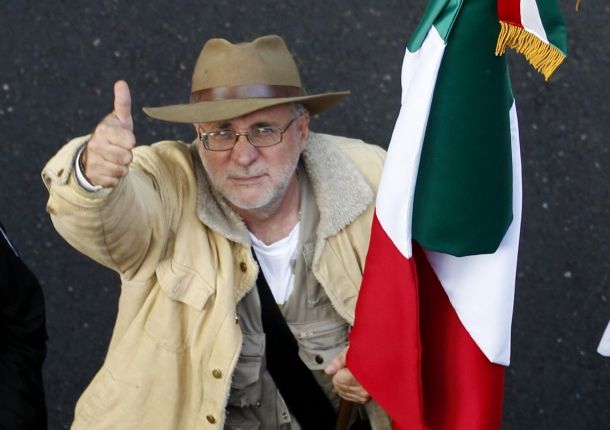 Mexico has been slow to mend from the repeated stabs of a drug war, declared in 2006, and the blunt pummel of America’s recession in 2008. But 2011 showed more signs of recovery than relapse.
Mexico has been slow to mend from the repeated stabs of a drug war, declared in 2006, and the blunt pummel of America’s recession in 2008. But 2011 showed more signs of recovery than relapse.
At least 40,000 Mexicans have been killed from drug-related violence over the past five years, and the number directly affected is much higher. It is no longer acceptable to say that a good purge is underway—innocent bystanders and respectable officials are being killed in increasing numbers.
At the same time, the large drug syndicates are clearly under pressure. Several arrests came in November alone. “El Junior,” a Gulf cartel chieftan, was arrested in Texas. A high-level member of the Sinaloa Federation was arrested in northern Mexico a few days later; then came the apprehension of a key “paymaster” of the Zetas. All told, more than two dozen high-level narcos have been taken out of the drug trade this year. This may be a sign that Mexico’s drug violence is about to abate. Or, it could point toward a more blotted landscape of violence, with small gangs backfilling the work previously done by a handful of major groups.
Out of the mire, a poet warrants high praise. After his son Juan Francisco was murdered in March, Javier Sicilia helped organize a three-day, multi-city demonstration against drug violence. Sicilia is very critical of Calderón’s approach to the drug war; he also seethes patriotism. It’s a sentiment shared by millions of Mexicans.
Given his popularity, Sicilia could’ve resorted to demagoguery. That and two other things did not happen: the police didn’t crush the protests, and the government didn’t collapse. Meanwhile, protests in the Middle East, Europe, and America, have harkened parallels to the annus horribilis of 1968. While showing immense courage, Sicilia helped shed a light on how far Mexico has come since the Tlatelolco massacre. This complex of reasons is why I believe Javier Sicilia has impacted Mexico more than any other person in 2011.
Drug violence reduces Mexico’s growth by one point, according to BBVA. Yet, since the summer Mexico’s economy has outpaced expectations: industrial output is beating forecasts; unemployment is hovering around 5 percent; inflation remains low. GDP numbers released in November show the economy growing at 4.5 percent, instead of the 3.9 percent predicted. The biggest surprise of 2011 will come in early 2012, when official statistics confirm that Mexico’s growth this year surpassed Brazil’s.
What else is in store for 2012? A presidential election will be held on July 1. PRI candidate Enrique Peña Nieto is the odds-on favorite. He has heartthrob appeal, and he doesn’t avoid the camera. So, expect back-to-back episodes of the Enrique Peña Nieto show. This will be followed by more EPN. If you don’t like it, remember the run-up to his election is umpteen times preferable to AMLO and the aftermath of the 2006 elections.
Here’s my dos centavos on the best writing about Mexico in 2011. The Atlantic has published several short articles on different aspects of Mexican culture, including a piece on EPN’s charisma and, last month, a mother’s reflections on Guanajuato’s “Mummy museum.” A 2,500-word article in the Economist, “Making the Desert Bloom,” does a fantastic job of balancing the strengths of Mexico’ economy against the perception problem created by drug violence. If the drug war draws your interest, check out George Grayson’s study on vigilante violence in Mexico (this blog is referenced in footnote # 3). For fans of more lyrical fare, see Reed Karaim’s article on the US-Mexican border in the American Scholar.
Finally, Mexico is part of the Foreign Policy Association’s Great Decisions 2012 line up. “Beyond the Border,” which will air on the Great Decisions TV series, goes beyond drugs and immigration to show why Mexico is important to US security and prosperity.
Thank you for visiting Foreign Policy Blogs. Please check back to see how events unfold in 2012.